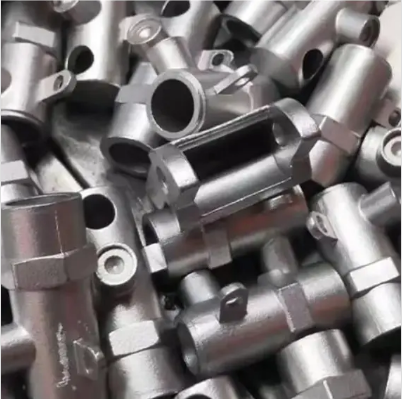Mobile:+86-311-808-126-83
Email:info@ydcastings.com
English
aluminum alloy casting
The Significance of Aluminum Alloy Casting in Modern Manufacturing
Aluminum alloy casting has emerged as a vital process in various industries due to its unique combination of properties, including lightweight, corrosion resistance, and excellent mechanical performance. This casting technique involves pouring molten aluminum alloy into molds to create complex shapes and structures, which are essential in sectors such as automotive, aerospace, consumer goods, and electronics.
Advantages of Aluminum Alloys
Aluminum alloys are favored for casting due to their superior characteristics compared to pure aluminum. By alloying aluminum with elements such as silicon, magnesium, and copper, manufacturers achieve enhanced strength, improved ductility, and better thermal properties. These alloys can be tailored to meet specific requirements, which makes them suitable for a wide range of applications. For instance, the addition of silicon improves fluidity in the molten state, facilitating the casting of intricate designs and reducing defects.
One of the most significant advantages of aluminum alloy casting is its lightweight nature. This property is particularly important in the automotive and aerospace industries, where reducing weight can lead to increased fuel efficiency and enhanced performance. In automobiles, the shift towards lightweight materials is driven by stringent regulations aimed at reducing emissions. By using aluminum alloy components, manufacturers can achieve significant weight savings without compromising structural integrity.
Casting Techniques
There are several methods for aluminum alloy casting, each with its own advantages and applications
. The most common techniques include sand casting, die casting, and investment casting.- Sand Casting is known for its versatility and cost-effectiveness. It involves creating a mold from sand and pouring aluminum alloy into it. This technique is ideal for producing large parts and low-volume production runs.
aluminum alloy casting

- Die Casting is characterized by high pressure and speed, making it suitable for mass production of complex geometries. This method is widely used in the automotive industry for producing components like engine blocks and transmission housings. The high dimensional accuracy and smooth surface finish achieved through die casting reduce the need for extensive machining.
- Investment Casting involves creating a wax model that is coated in a ceramic shell. Once the shell hardens, the wax is melted away, and molten aluminum is poured into the mold. This technique is ideal for producing intricate and high-precision parts, making it popular in aerospace applications.
Challenges and Innovations
Despite its many advantages, aluminum alloy casting is not without challenges. One common issue is porosity, which can occur due to the entrapment of gas bubbles in the molten metal. This defect can weaken the final product and may lead to premature failure. To mitigate these issues, manufacturers are increasingly turning to advanced technologies, such as computer-aided design (CAD) and computer numerical control (CNC) machining, to optimize the casting process and enhance product quality.
Another area of ongoing innovation is in the development of new aluminum alloys that can withstand higher temperatures and stresses. Research is being conducted to create alloys with superior performance characteristics for demanding applications in aerospace and automotive sectors, particularly in electric vehicles, where thermal management is crucial.
Conclusion
In conclusion, aluminum alloy casting plays a pivotal role in modern manufacturing, providing numerous advantages such as reduced weight, enhanced mechanical properties, and design flexibility. As industries continue to evolve and demand more efficient and effective materials, the importance of aluminum alloys in casting processes will only grow. With ongoing innovations and advancements in technology, the future of aluminum alloy casting looks promising, poised to meet the challenges and opportunities of the 21st century.
-
Materials Used in Manufacturing Cap End Pipe FittingsNewsNov.24,2025
-
Material Properties of CF8M CastingNewsNov.24,2025
-
How to Inspect Pump Cap Ends for DamageNewsNov.21,2025
-
Backward Curved Impeller – Efficient Airflow Solutions for Industry | YD CastingsNewsNov.21,2025
-
Automobile Water Pump - Efficient, Quiet, Durable & ElectricNewsNov.21,2025
-
Impeller for Pumps – High-Efficiency, Durable, OEM-ReadyNewsNov.21,2025











